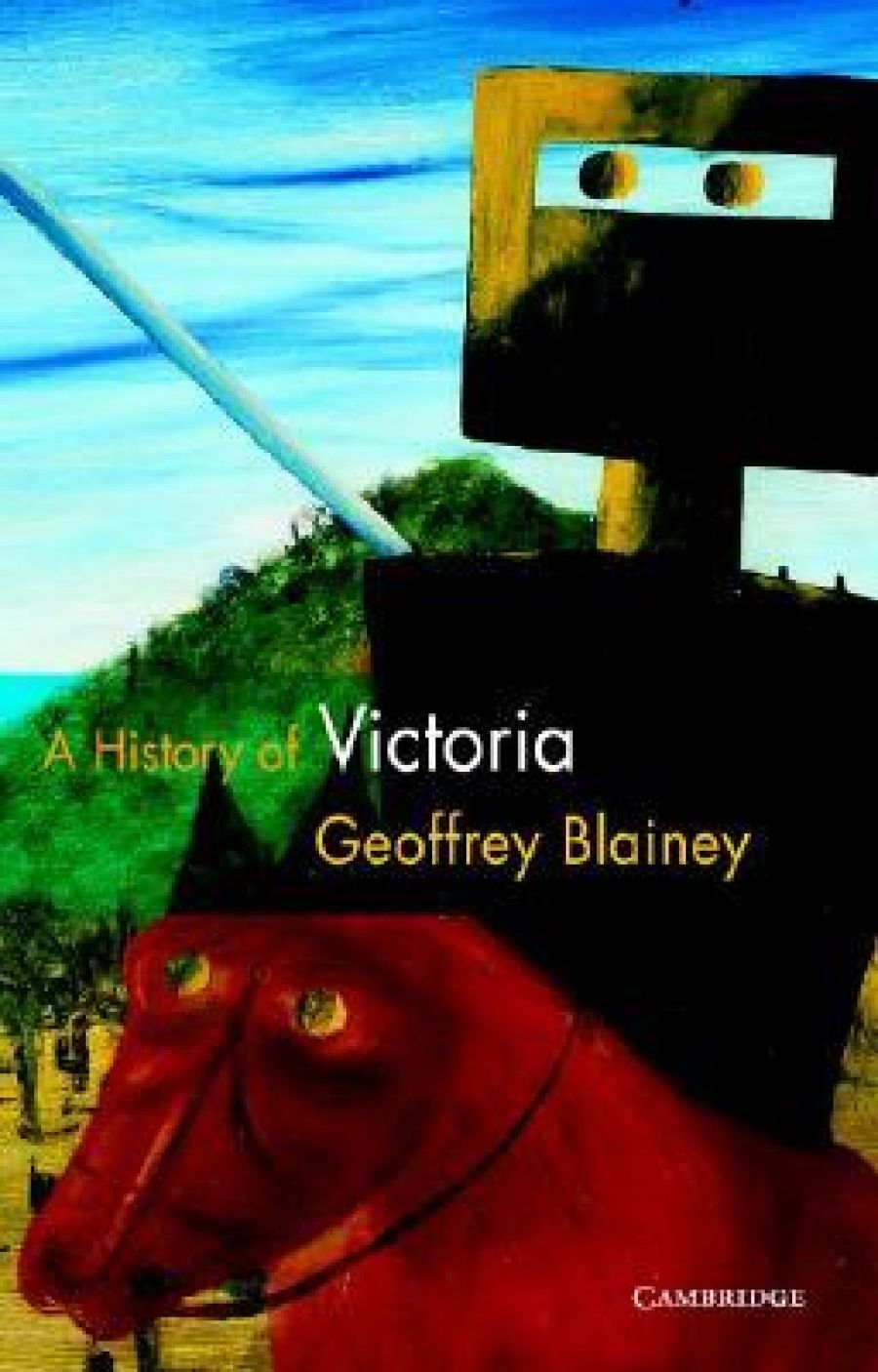
- Free Article: No
- Contents Category: History
- Custom Article Title: Beverley Kingston reviews 'A History of Victoria' by Geoffrey Blainey
- Review Article: Yes
- Online Only: No
- Custom Highlight Text:
An earlier version of this history of Victoria first appeared in 1984 as Our Side of the Country. Though for the past sixteen years Sydney-born politicians Paul Keating and John Howard have usurped Victoria’s former almost constant ‘top position’ in Canberra, the possessive pride reflected in that early title still runs through this modern version ...
Between the gold rushes of the 1850s and the Depression, Victoria’s population and wealth outstripped New South Wales’s. Under the influence of Joseph Syme, founding editor of the Melbourne Age, and his protégé Alfred Deakin, Victoria defied the contemporary economic orthodoxy of free trade and adopted protection for local industries. Despite the reservations of New South Wales’s free trade premier George Reid, who said that he would vote against Federation for economic reasons, though he understood most New South Welshmen would vote for it on nationalist grounds, the Victorian protectionist package became one of the cornerstones of Federation. As Blainey shows, Victorian liberal protectionist ideals dominated federal politics until well into the second half of the twentieth century, and a great edifice of protected working and living conditions was built upon them. Victoria’s domination of federal politics and economic policy was greatly assisted by the development of preferential policies within the British Empire, enabling Australia to export almost unlimited quantities of raw materials to Britain with preferential conditions for the import of British manufactured goods and capital. Until Britain entered the European Common Market, Australia thrived on imperial protection.
By the 1980s globalisation was upon us, economic leadership in Australia had passed from Melbourne to Sydney, and to appease the Sydney money market, Paul Keating had begun dismantling the long-standing structures of Victorian liberal protectionism: the tariff system, the basic wage and the arbitration system. More recently, John Howard, another Sydneysider who despises protection, has been restoring nineteenth-century free trade values to the Australian federal government. With New South Wales liberalism now dominant in Canberra, it is not surprising that, in the states, Labor governments with policies not unlike old-fashioned Victorian liberals are in power.
Melbourne inevitably dominates the history of Victoria, but Blainey has always had great sympathy for the farmer and rural life. In his concluding chapter, ‘The Alps and the Plains’, he reflects on relations between modern Melbourne and the provinces, regretting the impact of the conservation movement’s ‘green tape’ on rural development. As Melbourne’s suburbs have extended their reach, and better transport has brought rural Victoria closer than ever, the capital has become the sporting and entertainment hub of the state, adding motor racing, tennis and soccer to a sporting calendar already famous for its horse racing and Australian Rules. Melbourne’s reputation for sophisticated shopping, and its restaurants, cafés and bars, may partly compensate for the loss of the ABC or creative individuals to Sydney, though less is said of the considerable cultural and intellectual influence still wielded by Melbourne’s serious publishing industry, or of the high moral tone still emanating from Melbourne on civil rights and immigration policy, for example.
This affectionate account of Victoria’s history will be read widely for pleasure. At a time when it is thought that our system of federalism requires closer scrutiny, and substantial revision, Blainey’s thoughtful reflections on Victoria’s experience of federalism should be studied carefully, while those who advocate a unified national curriculum in Australian history may find this account of what has made Victoria different a useful guide to the limits of possibility.


Comments powered by CComment